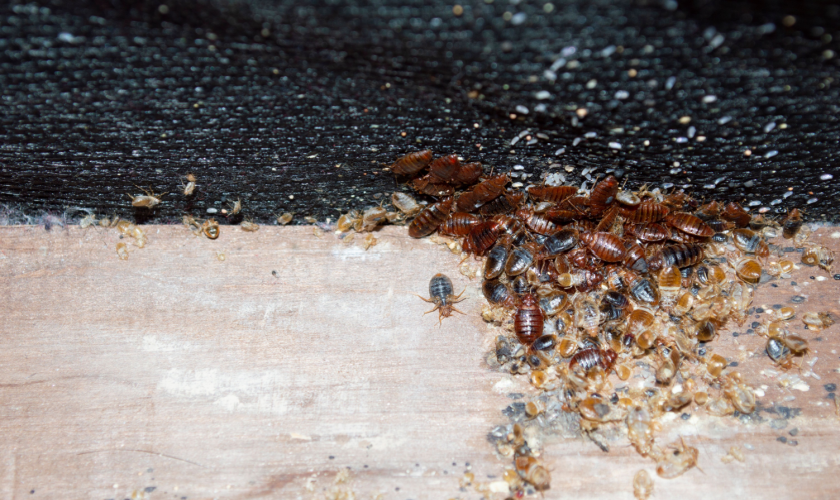Comprehending the Lifecycle of Bugs for Targeted Control Strategies
Understanding the lifecycle of parasites is an essential aspect of effective parasite monitoring techniques. Via a much deeper understanding of exactly how pests prosper and advance, customized control strategies can be designed to address particular factors in their lifecycle, inevitably leading to more successful insect administration end results.
Relevance of Understanding Pest Lifecycle
Recognizing the lifecycle of insects is vital for establishing efficient and targeted control techniques in insect monitoring. By understanding the various stages a parasite undergoes from egg to adult, bug control professionals can identify susceptible factors in the lifecycle where intervention can be most effective. Understanding when larvae are most energetic can help figure out the optimum timing for using larvicides. In addition, recognizing the life-span of an insect types can aid in anticipating populace growth patterns and potential problem risks.
In addition, acknowledging the particular ecological problems essential for every phase of the parasite's lifecycle can guide decisions on environment alteration or exclusion approaches to disrupt the lifecycle and decrease pest populaces. This expertise allows pest management professionals to carry out proactive measures instead of relying exclusively on responsive treatments, leading to more long-term and lasting parasite control remedies. Ultimately, a comprehensive understanding of pest lifecycles equips insect control specialists to tailor their strategies properly, lessening ecological influences and optimizing control outcomes.
Secret Stages in Bug Advancement
To properly apply targeted control techniques in parasite administration, an important aspect depends on comprehensively recognizing and understanding the key stages in bug development. Insect advancement commonly contains numerous key phases that are crucial for their lifecycle and monitoring. The initial stage is the egg stage, where insects lay eggs that later hatch out right into larvae. Larvae after that progress right into pupae, a phase where they undertake metamorphosis prior to emerging as grown-up bugs. Comprehending these stages is necessary as it aids in identifying weak spots in the lifecycle where control measures can be most efficient.

Susceptabilities in Insect Lifecycle
Throughout the numerous stages of a bug's lifecycle, distinct vulnerabilities emerge that can be purposefully targeted for reliable control measures. One vital susceptability depends on the egg phase, where pests are often a lot more at risk to particular insecticides or organic control representatives as a result of their soft external covering, making them much easier targets for intervention. Additionally, the larval or nymph stage presents susceptabilities as parasites undergo quick growth and advancement, needing high power usage that can be manipulated by interrupting their food sources or presenting growth preventions. Pupal stages, characterized by immobility and improvement, offer a home window for targeted control with physical obstacles or specific therapies that prevent successful emergence. Finally, grown-up parasites, while more resilient as a result of their reproductive capability, can still be at risk during mating or egg-laying tasks, which can be disrupted through scent catches or sterilization methods. Understanding these vulnerabilities in the pest lifecycle is important for developing precise and effective control strategies that effectively take care of parasite populations while lessening environmental influence.
Implementing Targeted Control Steps

Applying targeted control procedures usually involves a multi-faceted approach. This might consist of habitat adjustment to make the environment much less welcoming to insects, such as removing standing water for insect control or securing entry points for rodents. Additionally, biological control techniques can be utilized, where all-natural killers or microorganisms are presented to keep bug populations in check.
Integrated Pest Administration (IPM) strategies that incorporate various control steps in a worked with and sustainable way are frequently the most efficient in accomplishing lasting parasite administration objectives. By executing targeted control procedures based on a detailed understanding of insect lifecycles, bug populaces can be effectively managed while reducing threats to human health and wellness and the setting.
Improved Insect Monitoring Practices

Furthermore, the unification of organic control agents, such as all-natural predators or virus of insects, can help reduce dependence on chemical pesticides and advertise an extra well balanced environment. Applying physical obstacles and catches can likewise belong to boosted bug management practices, offering non-toxic and targeted remedies for pest control. In addition, the use of scents and other semiochemicals can disrupt pest breeding patterns and interaction, leading to reduced pest populations in time.
Conclusion
By recognizing vital phases in pest growth and susceptabilities in their lifecycle, targeted control measures can be executed to decrease bug populaces. Improved insect management methods can aid decrease the dependence on broad-spectrum chemicals and promote more lasting and ecologically pleasant insect control techniques.
Understanding the lifecycle of pests is essential for developing reliable and targeted control methods in insect administration. By comprehending the different phases a parasite goes through from egg to grownup, bug control professionals can determine vulnerable factors in the lifecycle where treatment can be most effective. Inevitably, an extensive understanding of pest lifecycles encourages bug control experts to customize their approaches successfully, taking full see this here advantage of and lessening ecological influences control results.
By executing targeted control steps based on a detailed understanding of parasite lifecycles, parasite populations can be efficiently controlled while reducing risks to human health why not try these out and the atmosphere.
By recognizing crucial stages in pest growth and vulnerabilities in their lifecycle, targeted control steps can be applied to lessen parasite populations.
Comments on “Specialist A1 Bed Bug Exterminator in Houston - Effective Solutions”